
Bimseby - 11-10-2014 at 05:57
Hello mad scientists,
I have a question regarding my destillation equipment. I consider making a 20% solution of nitric acid by distilling H2SO4 and KNO3.
My question is whether my glass equipment is sufficient for distilling nitric acid. On the attached images I have taken pictures of my 3 L roundbottom
flask and my 50mm vigreux column.
Both have a plastic cap and I am afraid the nitric acid might eat through the plastic.
So my question is, will I have to go for some new equipment or can I stick with this?
Thanks in advance
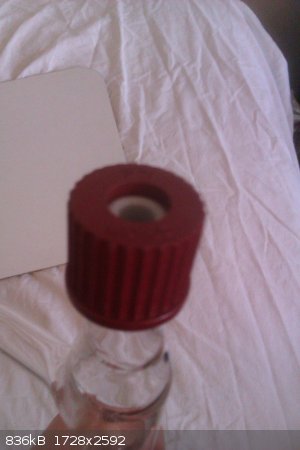
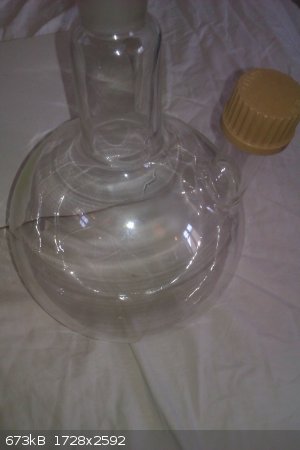
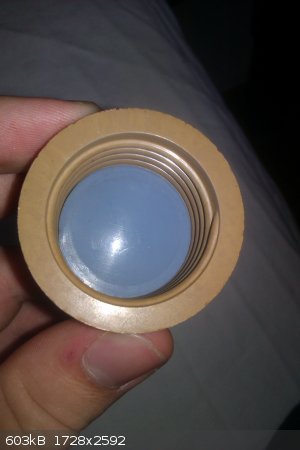
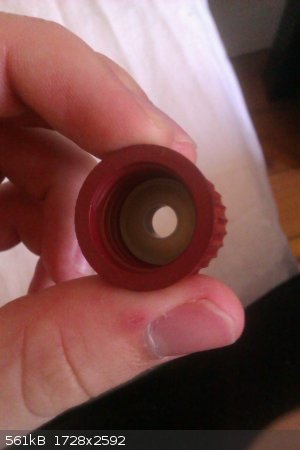
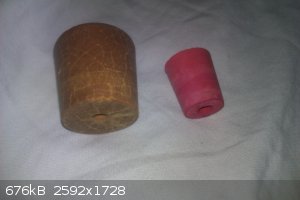
cyanureeves - 11-10-2014 at 06:11
how are you going to connect the column? nitric fumes are very hard to contain using plastic or rubber but teflon tape is great for resisting nitric
fumes. use teflon tape where ever the nitric fumes come in contact with rubber or plastic.
Justin Blaise - 11-10-2014 at 06:52
I would be very concerned about the hot nitric acid eating through the rubber stoppers and gaskets. From the pictures, I can't tell how the column
connects to the still head. Would it be possible to take a zoomed out picture of the setup?
CuReUS - 11-10-2014 at 07:01
for making such a dilute acid you dont have to go to so much trouble
just follow the first method of this video
http://www.youtube.com/watch?v=2yE7v4wkuZU
also nitric acid does not attack plastic,at the most it might just discolor the cap and make it yellow
[Edited on 11-10-2014 by CuReUS]
Bimseby - 11-10-2014 at 07:22
Here are some more pictures after I have put the setup together (more or less) without the termometer
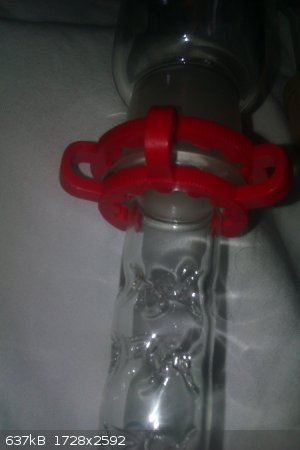
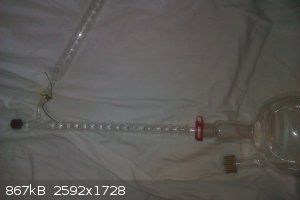
Justin Blaise - 11-10-2014 at 20:30
This website has some info on what plastics are compatible with nitric acid.
http://www.harringtonplastics.com/chemguide.cfm
Nitric acid is definitely not compatible with all plastics, especially at the temperatures required to distill it. Teflon is mostly compatible with
nitric acid, and as stated before, it might be worthwhile to wrap any plastic pieces that will come into contact with the acid with Teflon tape.
I'm not sure where you would use the rubber stoppers in this setup, but if you don't need to use them, I wouldn't.
[Edited on 12-10-2014 by Justin Blaise]
Amos - 11-10-2014 at 20:43
Just do it outside and you won't have to worry too much about little leaks. It might be a better idea to distill it in concentrated form and then
dilute it afterward, though.
Bimseby - 11-10-2014 at 22:33
I figured out that the screwcaps had a teflon coating on the inside, so I consider running a small batch to see how it works  . If it doesn´t well then I have to get my wallet out of the pocket and get some new
equipment
. If it doesn´t well then I have to get my wallet out of the pocket and get some new
equipment 
blargish - 12-10-2014 at 09:34
Make sure your connections are completely sealed. I made the mistake of not doing so when I distilled my first batch of nitric acid and the keck clips
I used to clamp the apparatus together ended up getting attacked by the acid. This caused them to crack and break easily. 
cyanureeves - 12-10-2014 at 10:56
oh hell yeah that will work!that's a whole set up right there and that hole can easy,easy be plugged with teflon tape.nitric acid in your future.
subsecret - 12-10-2014 at 15:46
Teflon tape doesn't seal perfectly. Even when the joints are wrapped in a layer or two, the Keck clips may still be attacked.


 . If it doesn´t well then I have to get my wallet out of the pocket and get some new
equipment
. If it doesn´t well then I have to get my wallet out of the pocket and get some new
equipment 
